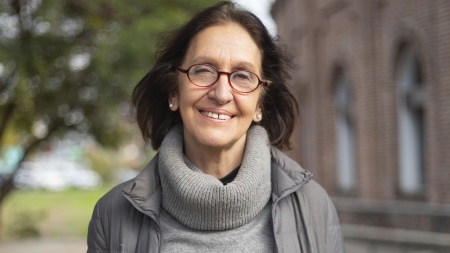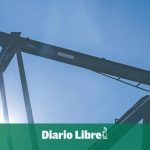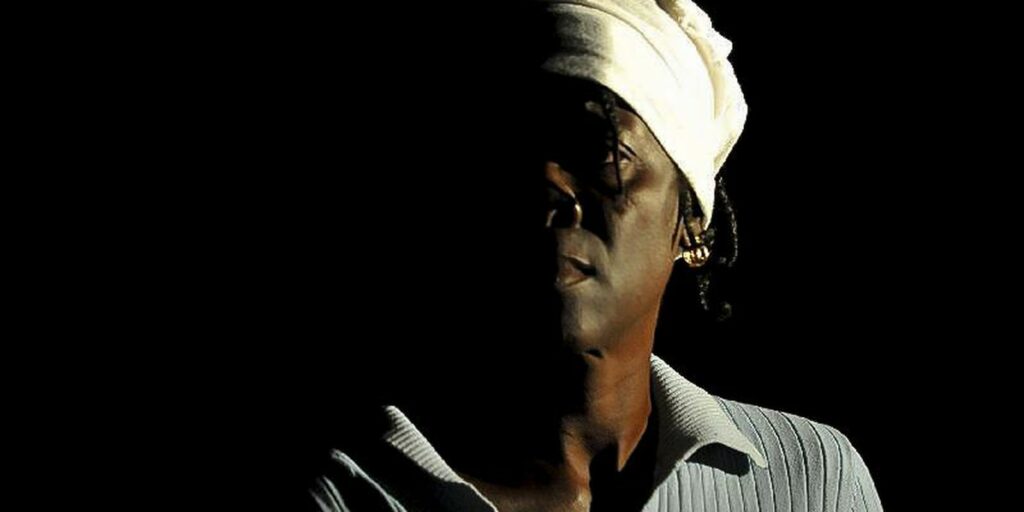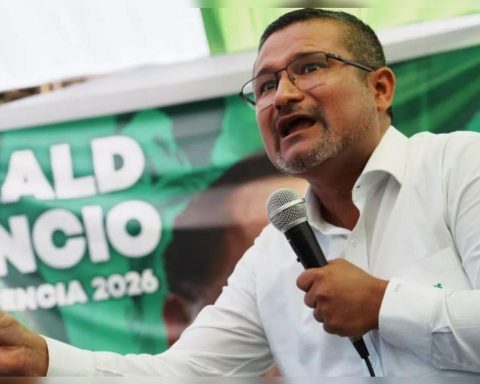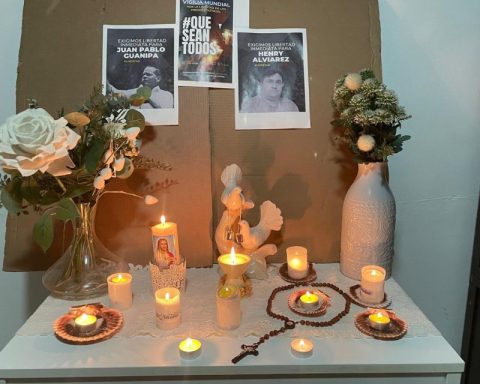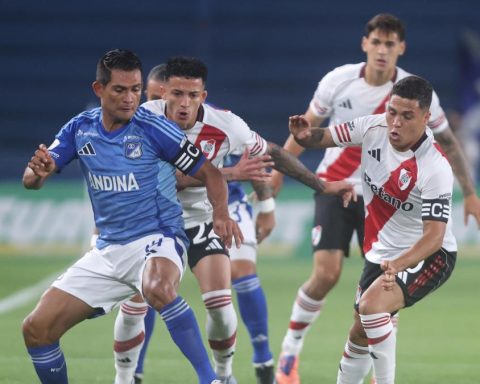How is the face of a figure like Juana Azurduy, of whom there are practically no portraits, fixed in the imagination? Why did the fierce and revolutionary imprint of Manuel Belgrano last, who did not perceive himself as a military hero? In his new book, “Public Portraits”the historian Laura Malosetti Costa analyzes -through portraits of painters- the idealization, or on the contrary, caricatural deformation, of certain characters throughout history, where often the truth or strict similarity does not prevail, but the adaptation to the ideas that are they wish to sustain with every heroic figure.
Is it that they are a fake most of the portraits of Argentine heroes that we keep in the collective imagination? “None is true, all are invented. And there are people who dedicated their entire lives to prove if the true portrait of so-and-so is this or that, and I say that it doesn’t matter, it doesn’t matter at all! There are portraits that didn’t work, or nobody likes them, or they don’t have pregnancy. And others have to do with a political or institutional will. So a portrait can be ‘true’ but ugly, or inappropriate,” explains Laura Malosetti Costa in an interview with Télam.
The truth is that “there is no hero without a portrait”, the historian will say at the beginning of this captivating volume that has the subtitle “Painting and photography in the construction of heroic images in Latin America since the 19th century”, published by the Fondo de Economic Culture (FCE), just over 300 pages that propose to reflect on the value of the portrait as a support for affective memory, through emblematic cases of these constructions, such as San Martín, Belgrano or Artigas.
“The case of Artigas is fascinating,” the author exemplifies. to the figure of the hero of Uruguay? What prevails is the portrait that Juan Manuel Blanes invented, ‘Artigas on the bridge of the Ciudadela’ (1884), which was only known in 1908, where it shows him looking at the rising sun, hopeful, standing on the drawbridge of Montevideo, with broken chains at his feet, super heroic, even though he has the face of any man”.
Because as the historian explains, “In reality, it is not the truth or the strict resemblance that has prevailed over time, but that image that best suits the ideas that he holds with his figure”write to graph your idea effectively.
Questioning the veracity of the faces that have been painted has obsessed iconographers of all times and in the second half of the 19th century, when the founding stories of Latin American nations began to be consolidated, the portraits of national heroes aroused a new interest, he explains. Malosetti Costa in the introduction to his story.
Because the heroes that this book brings together have the faces that we have looked at for a long time in our childhood, in school manuals, in Billiken-style magazines, in the pictures that hang in classrooms, in school posters, in educational audiovisual material, for this reason the chapters are built around the most “successful” image of each of these heroic figures of Latin American independence, without counting, in the author’s words “the almost total absence of the concept -and therefore of the image- of the heroine “.
“In reality, it is not the truth or the strict resemblance that has prevailed over time, but rather the image that best suits the ideas that he holds with his figure.”Laura Malosetti Cost
The author analyzes “those portraits of Latin American heroes and greats that have had an impact on many generations, trying to understand how they gradually settled in the collective imagination, how they were conceived and received, what is powerful and persistent in them to make them triumph over other images of the same historical character”, shells.
And that is why it is important here the presence of Juana Azurduand, a Creole landowner from Chuquisaca, who ended her life in misery, whose name became popular in the 1960s from the voice of Mercedes Sosa, and of whom only one portrait is preserved in the National Historical Museum of Argentina, with the face aged, furrowed with wrinkles, with the body of a soldier, the military jacket and a shadow that barely suggests the female chest.
“The symbolic figure of the military hero did not admit a female version in the times of construction of the national narratives, neither female nor mestizo,” Malosetti Costa emphasizes about this forgetfulness, a perspective recently recovered by gender studies, and above all in the framework of the bicentennial of independence in Latin America.
“Juana was one of the many women who fought on horseback but the stereotype says that during the wars of Independence women embroidered flags, donated jewelry and held gatherings to raise money. There is no reality of women fighting on the front lines like Juana Azurduy or Remedios del Valle, who take sides with the revolution,” he describes.
“And Juana was a very good horseman: she did one of the most important symbolic actions in a battle, which is to capture the enemy’s flag and that is why she is named a colonel. She knew how to distinguish herself in combat. The portrait in the Historical Museum is horrible, late and Then, in Bolivia, portraits were commissioned and there is one of a young and pretty girl who posed to be Juana and that is the image that appears the most on the Internet, the same one that was used for the anti-princess of the children’s channel Paka Paka, the most surprising of the drifts”, points out about this horsewoman in a white skirt and red jacket that highlights her feminine forms, long braided hair that frames her face, saber in hand.
“The portraits that transcend – reflects the author – have to do with beauty, on the one hand, and on the other, with the adaptation to the ideas they are holding. For example, this generation of children and young people who study at school Juana Azurduy, a young girl who rode a horse, who won flags and led battles, does not like that portrait with the face of an old woman. This one works for her that shows her young, pretty, brave“, he describes.
Another paradigmatic example is that of Manuel Belgrano“the most admired and undisputed hero” in Argentine history, of whom three portraits were made in life that “present features completely different from each other.” Which reflects your “true face”?he wonders in a section of the book about the elusive physiognomy of the patriot.
The most widespread portrait of Belgrano, on banknotes, stamps and history manuals, accepted as “the true face of the hero”, is “a beautiful oil painting by a European painter in which he appears elegant and meditative, in a chair Empire style, with red velvet draperies and her legs crossed in yellow pants.
Malosetti Costa’s hypothesis is that “Belgrano did not perceive himself as a military hero and did not see the need to be portrayed as such. He had a high-pitched voice and Dorrego made fun of him.”
“But also -he continues- he believed in the symbols, the flag, the cockade, the Potosí tarja which is what he sends to be exhibited in the Cabildo, as a symbol of his ideas. For Belgrano the public presence of the leader was the flag and they were the emblems”, he explains about the patriot who identified himself as “a man of letters rather than with his late and troubled military career that he had to assume after his adherence to the revolutionary cause”. In the portrait that prospered, “there is no attribute that links it to intellectual activity,” explains Malosetti Costa.
“Public Portraits” focuses its analysis on the most enduring faces of some of the heroic figures of Latin American independence, which also includes characters such as Simón Bolívar -who took portraits to enhance his figure as a warrior- or San Martín -the Father of the Homeland, the hegemonic masculine paradigm, whose true portraits were not liked-, in addition to those portraits with the capacity to affectively sustain imaginary communities -of devotion or hatred-, in two paradigmatic cases of the 20th century such as Ernesto Che Guevara and Eva Perón.
“The book questions visual culture and how images circulate in society, how they are manipulated, how a painting by a painter jumps over the fence and becomes something else. And it is based on images that were never considered art : the figurines from the history books, the Billiken ones, the stamps, the banknotes. People incorporate them as an affective datum from their childhood and do not think of them as artistic artifacts. And what interested me the most is to see how they are believed to be true”, he concludes about the book in which he notes: “There seems to be no possible identification or identity without the image of a face”.
